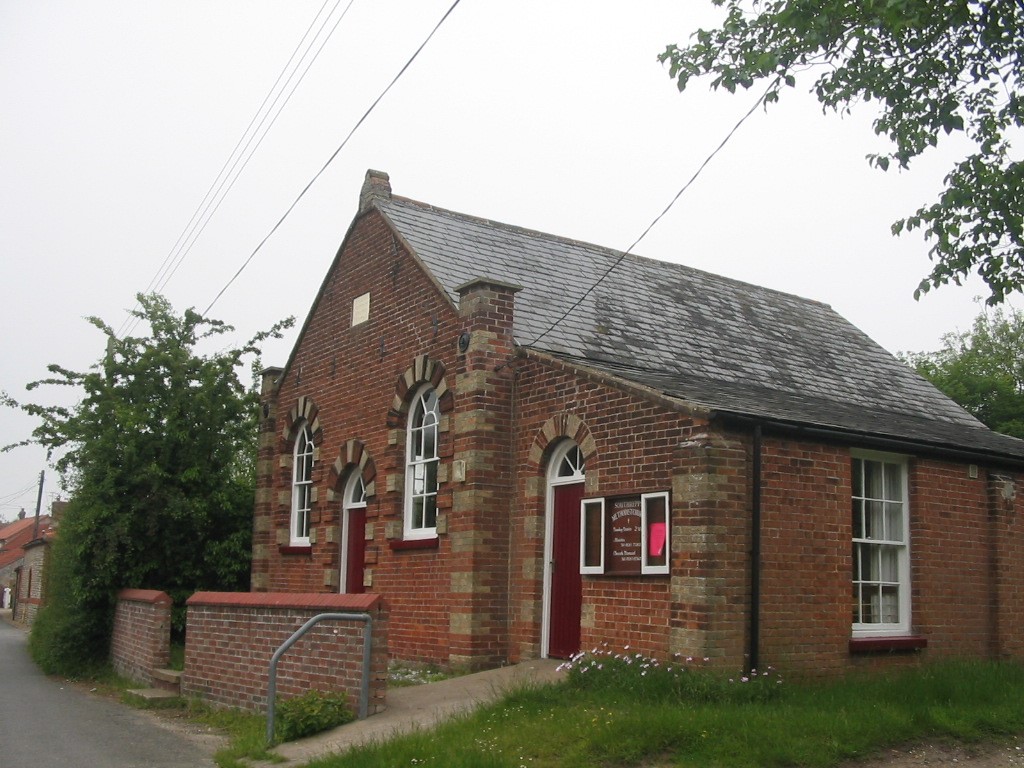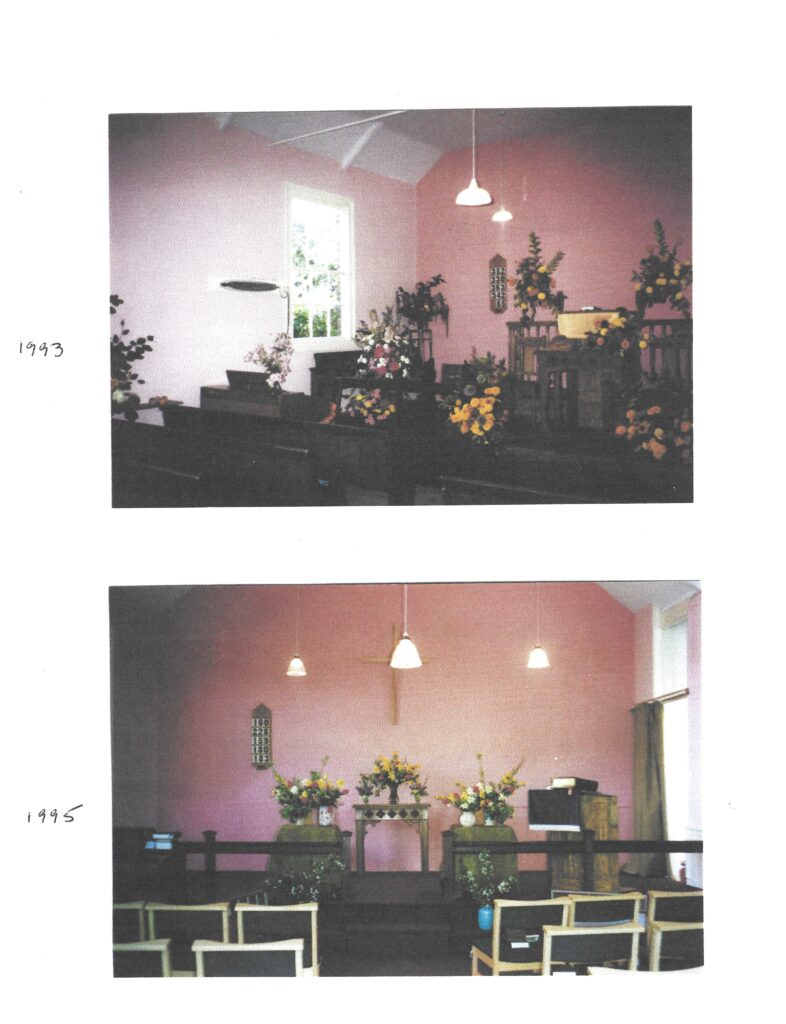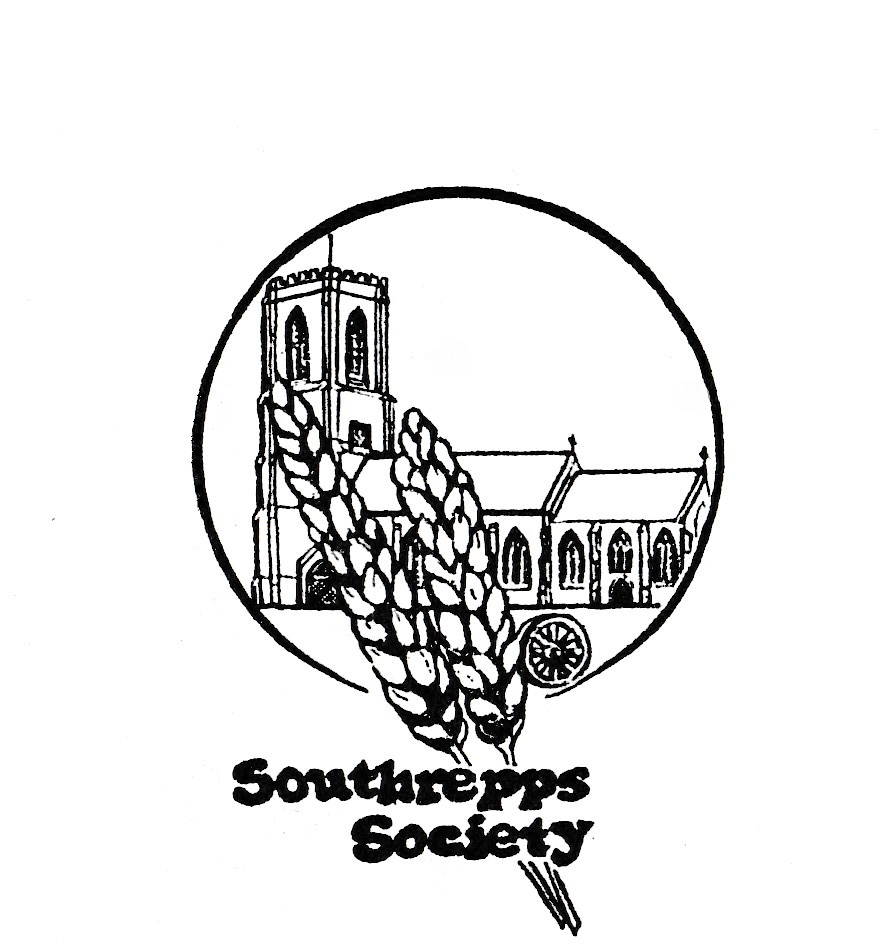Author Carol Needham
The Chapel Yard
Walkers off the beaten track on the footpath which runs from the junction of Sandy Lane and Clipped Hedge lane towards Northrepps, will come across a small field ringed by an impressive stand of mature lime trees. Those with a keen eye will notice a number of old gravestones standing amongst the undergrowth. The Old Chapel Yard as it is now known, is the site of a former non conformist Meeting House. The story of the Meeting House and later Chapels in the village itself follows closely the turbulent history of the Non Conformists in England. Non Conformism thrived in Southrepps from Elizabethan times, through the upheaval of the Civil War, the Commonwealth, the Restoration and up to the time of Wesley and the present day.

The seeds of Non Conformism lie in the reaction to the strident efforts of Elizabeth 1 to establish the Anglican Church as the established church throughout England. Non Conformist ideas were promulgated by theologians and even some clergy within the Anglican Church. Prominent among these was Samuel Oates who was appointed Rector of Southrepps in 1588. Samuel Oates’ patron was Lord Francis Walsingham, an influential Puritan in the court of Elizabeth and Chancellor of the Duchy of Lancaster. The Low Church tradition was well established in Southrepps by 1605. At some time in the mid 17th century, a Meeting House was built on the Old Chapel Yard. Edmund Brome, who was a famous preacher, was appointed Rector of Southrepps Church in 1647 and was sufficiently Low Church to tolerate a Meeting House well within sight of the Parish Church. He also survived Cromwell’s Commonwealth. Records show that after his eviction in 1660 on the restoration of the monarchy, Brome continued his, now illegal, non conformist ministry and preached at the Meeting House in Southrepps and other places between Alby and Bradfield. In 1662 following the Act of Uniformity approximately 2000 vicars and rectors were driven from parishes as non-conformists. Throughout the rest of the 17th century toleration of non conformists varied. At times Meeting Houses were licenced. At the time of Monmouth’s rebellion, preachers were imprisoned including John Lougher who preached at Southrepps. His cell can be seen at Norwich Castle.
The 18th century brought greater stability to the Southrepps Meeting House. It became part of the Independent Congregational Church of Bradfield and North Walsham. There were regular weekly services and records of the preachers exist. One preacher John Fletcher, who lived in North Walsham travelled every week in spring and summer on horseback to Southrepps for over 40 years.
To this day footpaths and bridleways link the Meeting House with the nearby villages of Northrepps, Southrepps, Bradfield, Thorpe Market and Gimingham. These remote lanes around the Old Chapel Yard were well known in the 18th century for smugglers moving French brandy and gin landed at Cromer, Overstrand and Sidestrand. Small woods adjoining the Northrepps Road were shown on maps as greater and lesser Smugglers Grove. It is even rumoured that the goods were hidden in the Chapel Yard and even in the Chapel itself !
At this time relations with the Parish Church were peaceful and even friendly. It was not uncommon for people to attend the Parish Church to satisfy the law and the Chapel to satisfy their faith. Only Anglican communicants could enter public service and professions. Only Anglican ceremonies of baptism and marriage and their register entries were legal.
During the 17th and 18th century, the non conformists using the Meeting House were Independent Congregationalists. Their followers were amongst the early Puritan settlers in North America and were influential during the time of the Commonwealth (1649-60) when Oliver Cromwell, who was an Independent ruled as Lord Protector. By the late 18th century the Southrepps Meeting House was probably in decline. Records show that Southrepps people were having their children Baptised at the Meeting House in nearby Bradfield. At the same time all across the country the followers of John Wesley were establishing Methodist Chapels. Methodists used the building for their services and took full possession of the building in 1799 for the sum of 10 shillings. The original 1799 Indenture is with the Deeds of the Chapel Yard held by the Southrepps Society.
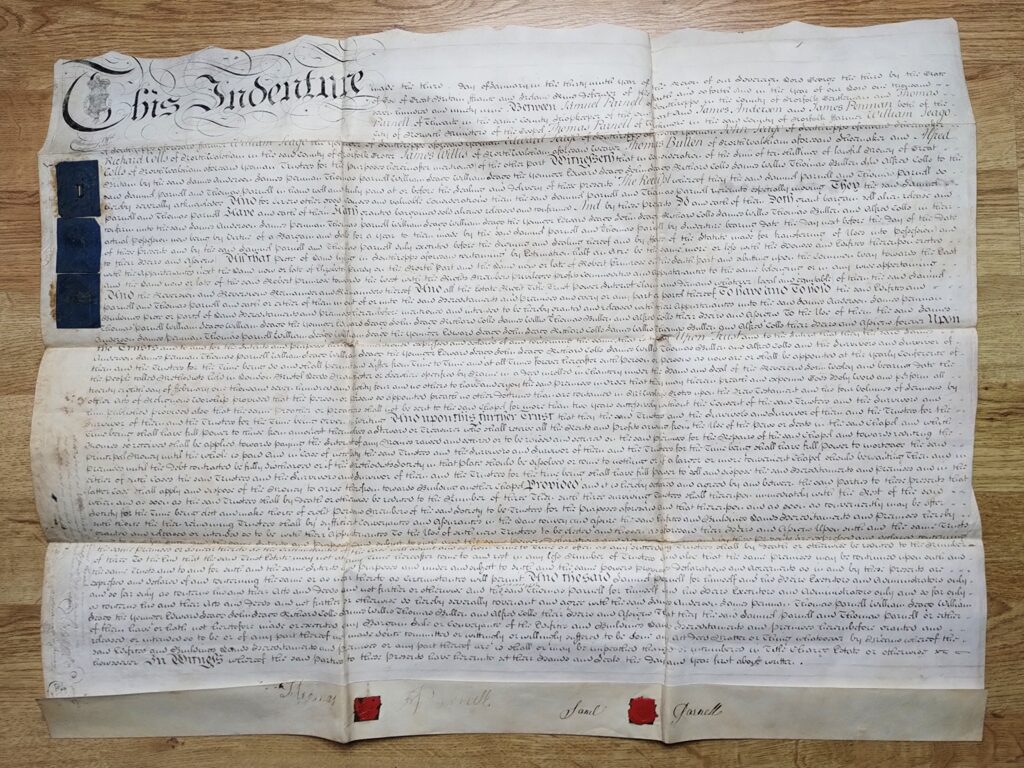
The Upper Street Chapel
In 1845 following legislation which changed the requirement for non conformist chapels to be remote from parish churches, the Meeting House was demolished and a new Methodist Chapel was built in the village of Southrepps on that part of the High Street now known as Chapel Street. Stone from the old building was used for the foundations of the new. The land was bought from Leonard Haddon, a farmer and blacksmith, for the sum of £3. In 1953, a further small piece of land was donated to the Chapel by Lillian Bartram of Church Farm. The graveyard at the Meeting House continued to be used for burials until 1870. The Methodist Chapel was a place of worship until it closed in 1979 due to the poor condition of the building.


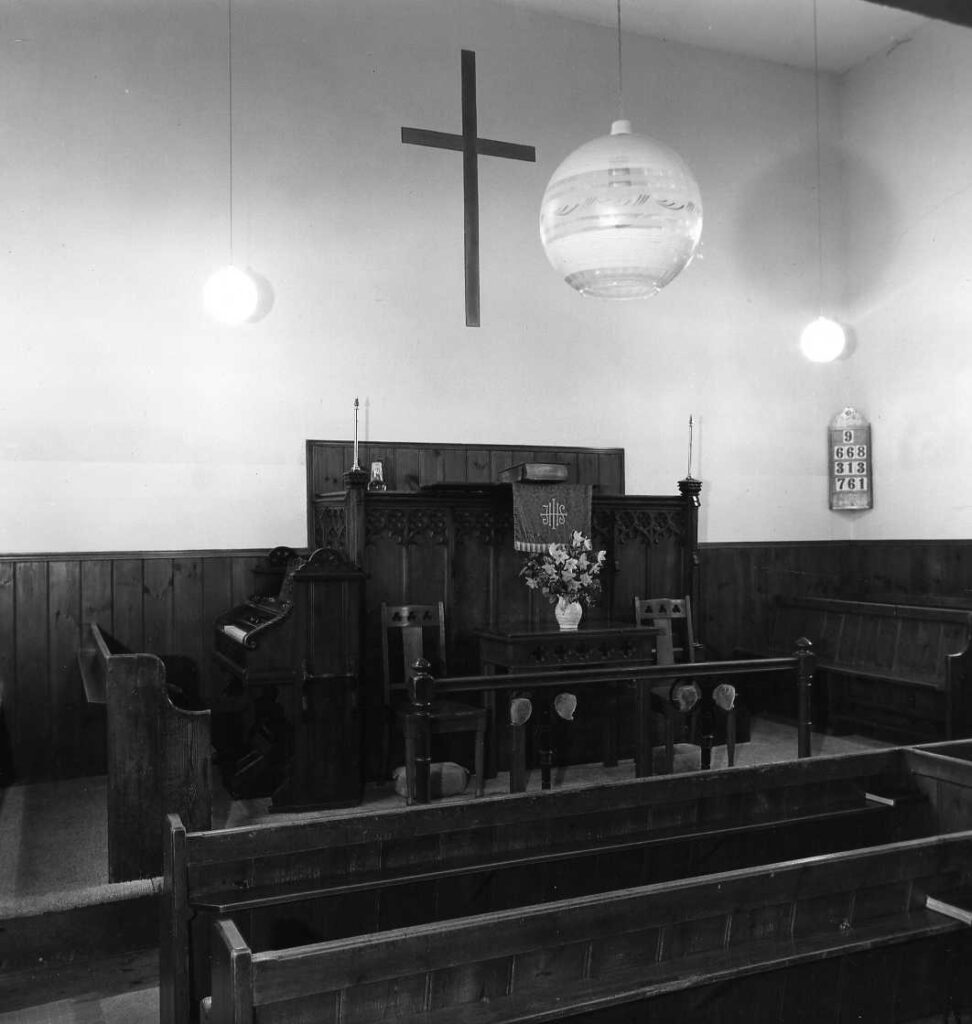

Demolition of the building was proposed but a successful planning application for its reclamation and conversion to a house saved the day. The former Chapel is now a private house.

It is not known if the ground associated with the former chapel was used as a graveyard by the Independents but it was used by the Methodists and members of the Southrepps Society reported that 26 graves were seen during a visit to the site 1979. Today only two intact head and footstones remain.

Even before the closure of the Upper Street chapel in 1979, the graveyard was derelict and with the demise of the former congregation the site was abandoned and forgotten. In the absence of any claim of ownership the owner of the surrounding field proposed to respectfully remove the monuments and incorporate it into his field. This prospect inspired the local amateur historian, Peter Smith to determine who actually owned the site. He eventually established that the site still belonged to the successors of the original 1799 Trustees. In 1979 there were no individual Trustees of the Upper Street Chapel as its ownership of the Chapel Street building had been transferred to the corporate body of the Methodist Church in 1953. That transfer process did not separately identify the Trustee’s custody of the Chapel Yard and consequently there was no official record of it in the Methodist Church records.
In principle, the Southrepps Society decided that they would endeavour to acquire the site to ensure its protection. Affidavits were procured from elderly members of the former congregation to establish that the Chapel Yard had to their knowledge been used and maintained by the former Trustees of the Chapel.
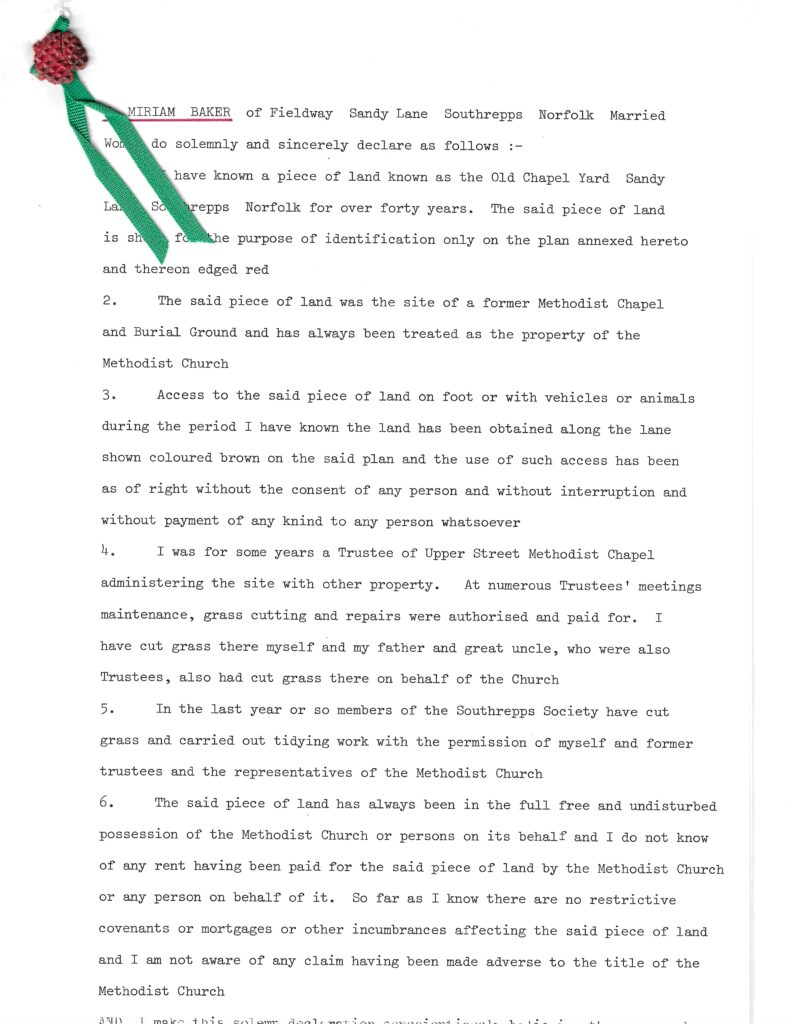
After six years of correspondence with the Methodist Church and Charity Commission, the Chapel Yard finally became the property of the Southrepps Society.
The Conveyance requires that the Southrepps Society appoint Trustees to keep the disused Burial Ground neat and tidy as an open space and allow access to the graves therein to relatives of the deceased and others .
The remote location and relatively difficult access to the site make frequent management impractical. In 2006 a management plan was prepared for the Society by the Norfolk Wildlife Trust . The plan allows for maintenance at a minimal level to make it attractive to walkers and visitors whilst maintaining its benefits to wildlife.
Lower Street Chapel
In 1868 a Primitive Methodist Chapel was opened in Lower Southrepps on Long Lane now called Chapel Road. The small congregation from Upper Street moved here until it too closed in 2009. It belonged to the Primitive Methodists until 2015 when it was sold. It is also now a private house.
